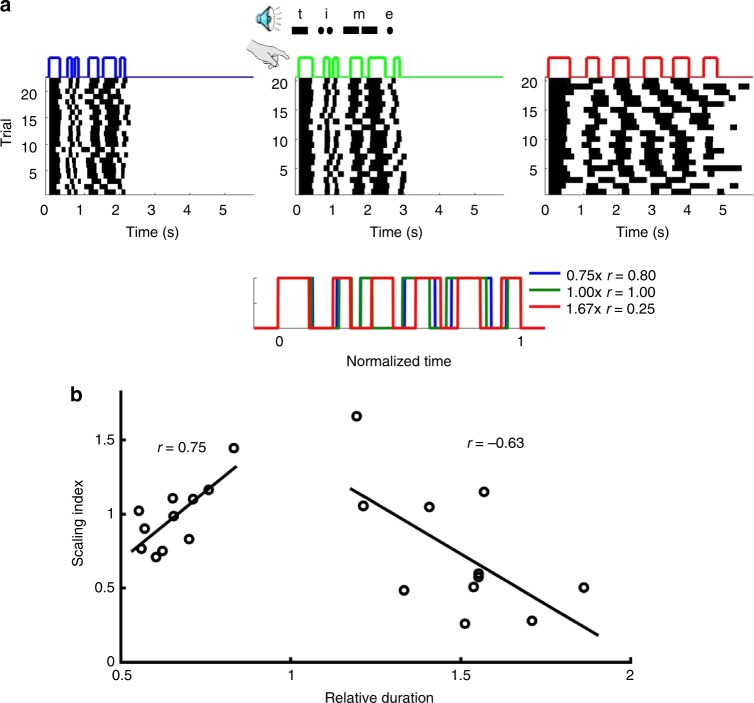Fig. 1.
Limited temporal scaling of a learned Morse code pattern. Subjects were trained to tap the Morse code for “time” at a speed of 1× (10 wpm) over four consecutive days (Methods). a On the fifth day, subjects were asked to produce the pattern at three different speeds: twice as fast (2×), normal speed (1×), and twice as slow (0.5×) (data from a single subject). Bottom: Average of the responses above plotted in normalized time. The legend indicates the produced speed relative to the trained (1×) condition and the correlation of the mean response to the response at trained speed. b The relationship between produced speed and temporal scaling accuracy for all 11 subjects. There was a significant correlation between speed and accuracy for both the fast (r = 0.75, p = 0.008, two-tailed t-test) and slow (r = −0.63, p = 0.038, two-tailed t-test) patterns

